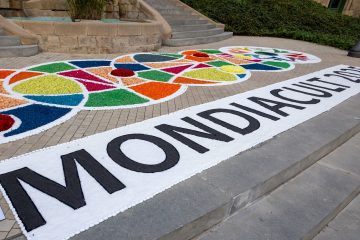The 20th anniversary of the Convention for the Safeguarding of the Intangible Cultural Heritage has undoubtedly inspired ICH institutions, researchers and professionals. The end of 2023 is marked by the publication of several works presented at the 18th session of the Intergovernmental Committee held in Kasane last December.
These new contributions shed new light on living heritage and the emerging ways of safeguarding its practices and know-how. Taking stock of the developments and changes that have taken place over the last 20 years, these publications address the contemporary issues and current debates surrounding ICH, paving the way for the years to come:
An accessible, practical and easy to apply introduction to working with intangible heritage, this book explores the different paradigms, developments and changes that have taken place in the field of living heritage over the last twenty years. Drawing on over thirty years’ experience in the field, Joanne Orr provides relevant case studies to address current issues and debates, recent changes and best practice.
Written for a wide audience, this book will be of use to practitioners, heritage and museum professionals, students and researchers alike.

- Safeguarding Intangible Cultural Heritage. A Practical Interpretation of the 2003 UNESCO Convention by Janet Blake
Professor of Law at Shahid Beheshti University in Tehran and member of the Iranian Committee of Experts for the ICH, Jannet Blake takes a fresh, practical look at a Convention she helped to create 20 years ago. This book presents a detailed analysis of the different approaches and measures for implementing the requirements of UNESCO’s 2003 Convention on Safeguarding Intangible Cultural Heritage (the Convention) and a practical interpretation of that treaty, based on the experience of States’ Parties and other primary actors. The book considers the interests of multiple stakeholders and takes account of how the Convention interacts with other international law regimes pertaining to both human rights and sustainable development.

- Intangible Cultural Heritage and Sustainable Development Inside a UNESCO Convention edited by Chiara Bortolotto, Ahmed Skounti
This book explores the theoretical and practical implications of the nexus between intangible heritage and sustainable development. It enquires how the commitment to sustainable development pushes the boundaries of the heritage area and challenges accepted views on the social use of heritage.
For this book, Chiara Bortolotto and Ahmed Skounti have brought together a number of interesting and varied perspectives. The authors come from different contexts and disciplinary backgrounds and are both active as scientists and as insiders in the implementation of the Convention, which provides a unique analytical perspective. that is based on a first-hand engagement with the practices of the Convention.



